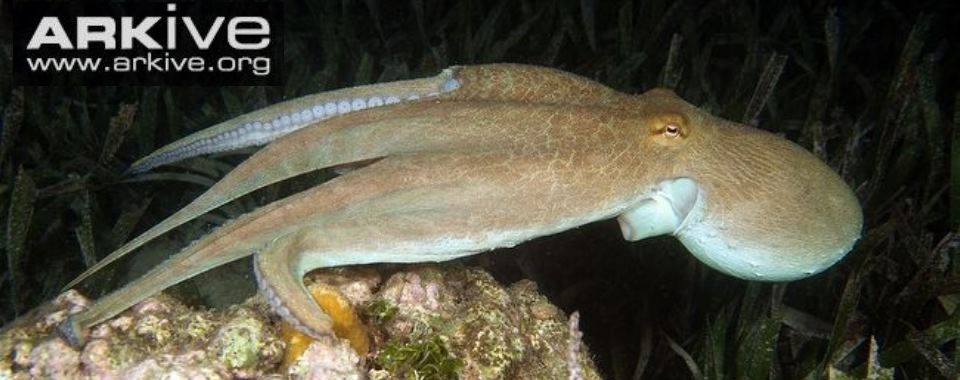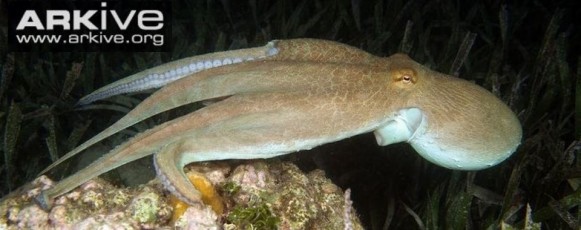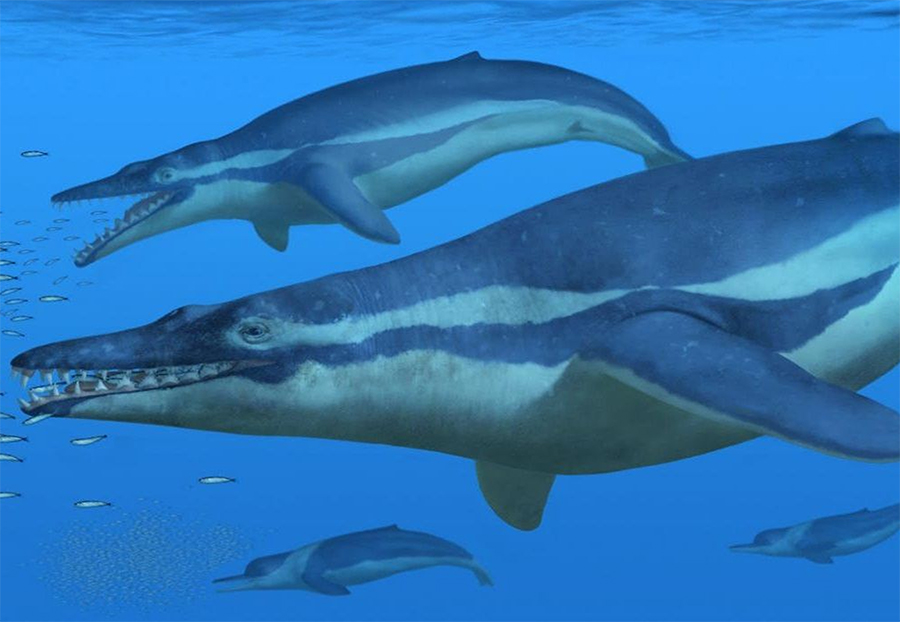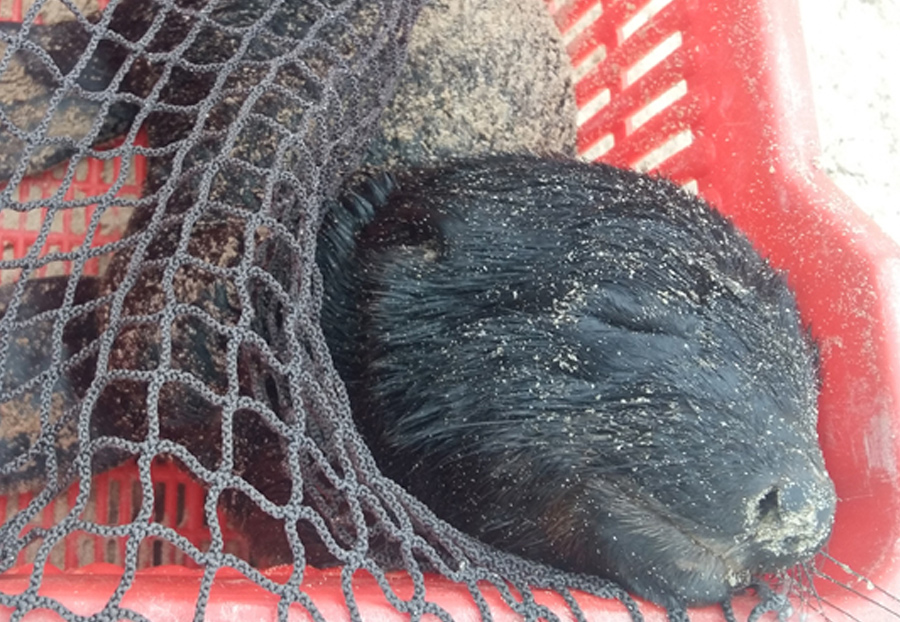Interesting facts on Octopuses.
Octopuses belong to the phylum Mollusca which also includes mussels, snails and nudibranchs .They belong to the class Cephalopoda (head-footed) together with squids, cuttlefish and nautilus. Cephalopods have well developed eyes and a ring of tentacles surrounding their mouth. Cephalopods are key species in the food chain because they are an important food source for many marine carnivores and also prey on a wide variety of fish and crustaceans. They are an important resource for human consumption. Octopuses have a reputation of being excellent learners. They are escape artists in captivity and can figure out how to get into glass jars for food. Interestingly, despite being largely solitary, they can also learn by observation in the same way that more social animals do e.g. primates.
Octopuses have soft bodies with elaborate skin patterns. Unlike most molluscs, octopuses do not have a shell and their “foot” has been modified into arms and tentacles. Octopuses have eight arms that are equipped with suckers that they use when catching prey. Their eyes are usually on one side of the head and as complex as a human eye. Their body is protected by a mantle that covers the gills in the back of the head. Water is pushed over the gills and out through a funnel or siphon (tube) near their arms. This siphon can move around to angle the octopus in the direction it wants to move and then by using jet propulsion they can escape or attack at great speed. They are also able to eject a cloud of dark fluid (ink) when threatened and this is used to confuse predators allowing the octopus to escape. They have powerful beaks which are similar in shape to parrots. The beak is used to shred prey into tiny parts that can be easily digested. Some species also have a poison gland on their beak which injects a toxin into their prey, subduing it so that it is easier to shred. Octopuses are masters of disguise and have sophisticated ways of camouflaging themselves. Most animals that use camouflage have a fixed slow changing pattern whereas octopuses (together with the other cephalopods) use their vision and skin to adapt their body pattern in less than a second. Octopuses can resemble a variety of backgrounds such as colorful and rocky reefs, kelp forests, seagrass beds and sandy bottoms. Some species even use objects like coconuts, shells, bottles, cans and tyres as their homes. Their ability to disguise themselves makes them efficient hunters and therefore able to catch a variety of food.
In South Africa the most commonly seen octopus is the Common octopus (Octopus vulgaris) also called Catfish, Seekat and Ingwane. They can grow to 120cm and are found from Walvis Bay to northern Kwazulu-Natal. They are found on reefs up to depths of 200m below the water surface. Common octopuses reach sexual maturity at about 3-4 months of age and only live for 9 to 15 months. During breeding the male inserts one of his arms into the cavity of the female to deposit a sperm packet. The female then lays the fertilised eggs in a den, placing the clusters of eggs on the walls and roof. The female will stay with her eggs until they hatch, nursing them by cleaning and oxygenating the clusters. They can lay anything from 100,000-500,000 eggs in one spawning. The eggs hatch after 80-135 days and the larvae lives free as zooplankton for the first 2-3 months before settling on the ocean floor where they develop into adult octopuses.
References
– Hanlon, R. T. 2007. Cephalopod dynamic camouflage. Current Biology, 17, R400–R404.
– Fiorito G. Scotto P. 1992 Observational Learning in Octopus vulgaris Science Vol. 256 No. 5056 p. 545-547.
– Iglesias J. Sánchez F. J. Otero J. J. Moxica C. 2000 Culture of octopus (Octopus vulgaris , Cuvier): Present knowledge, problems and perspectives Recent advances in Mediterranean aquaculture fi n fish species diversification Cahiers Options Méditerranéennes N. 47 P. 313- 321
– Iglesias J. Sánchez F.J. Bersano J.G.F. Carrasco J.F. Fuentes L. Linares F. Muñoz J.L. Okumura S. van der Meeren T. Vidal E.A.G. Villanueva R. Dhont J. Roo J.2007 Rearing of Octopus vulgaris paralarvae: Present status, bottlenecks and trends Aquaculture V.266 P.1–15
– Castro P. Huber M.E. MARINE BIOLOGY, SEVENTH EDITION ISBN 978–0–07–302819–4
– South African Institute for Aquatic Biodiversity COASTAL FISHERY RESOURCES an easy guide 2004





